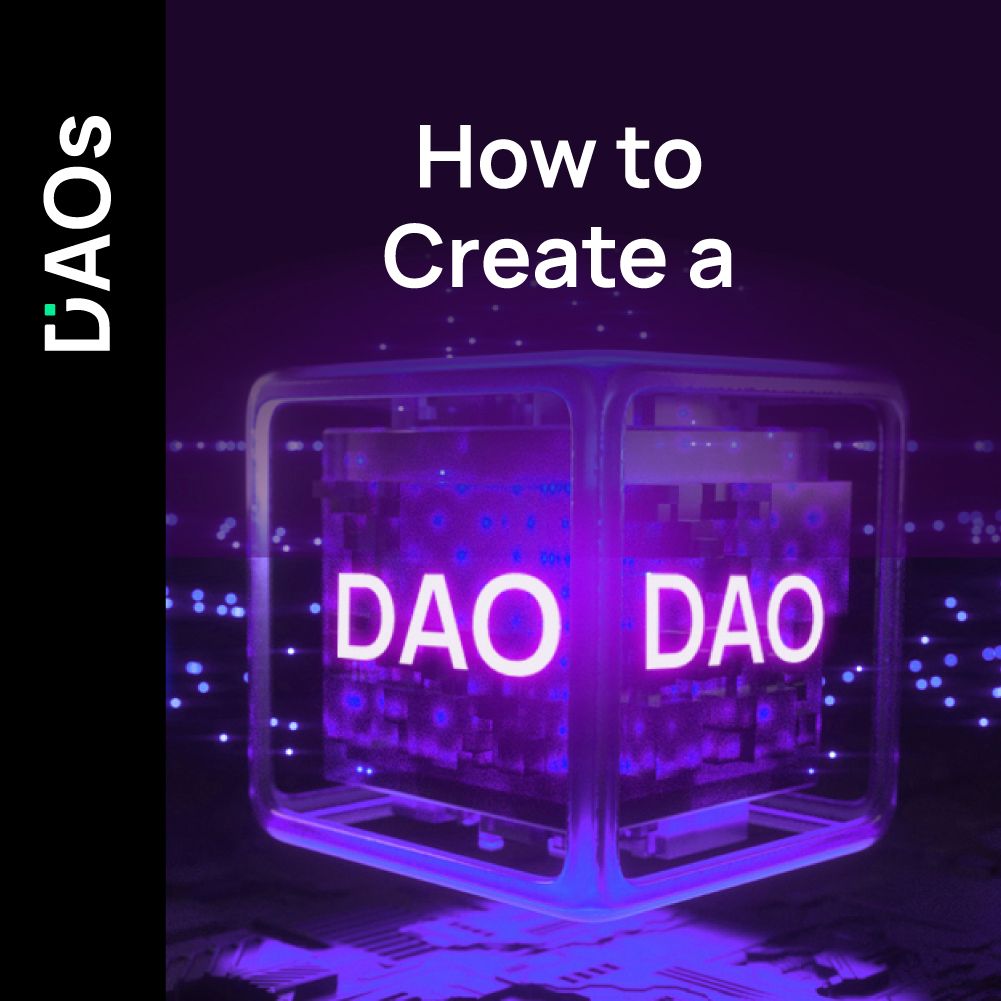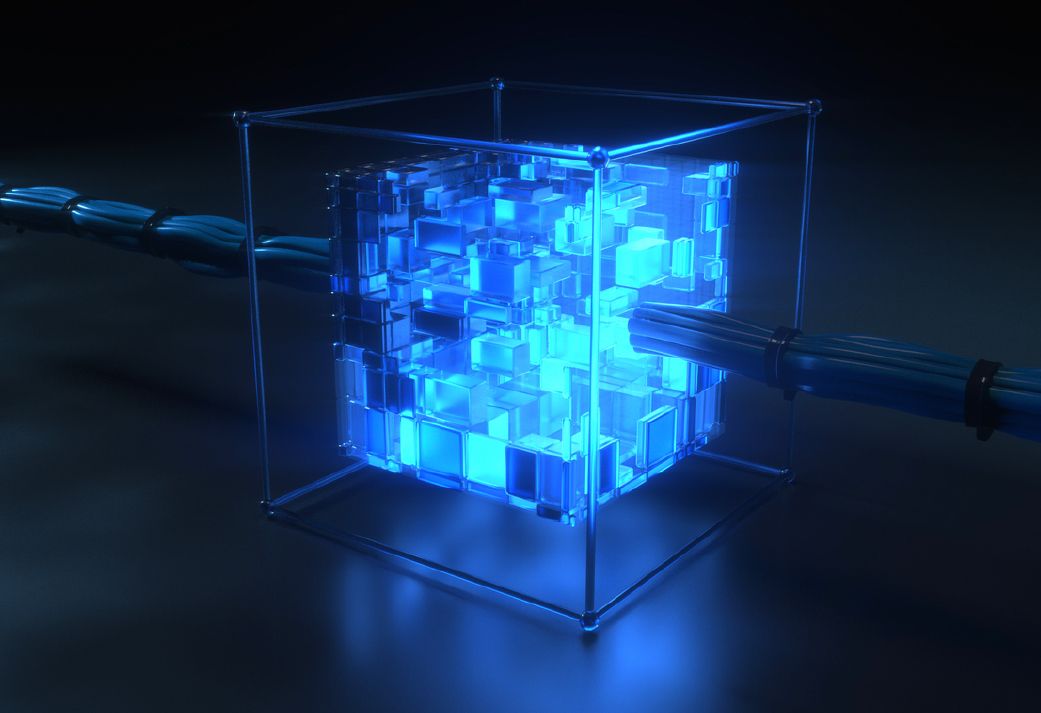05: How to create a DAO

A DAO (decentralized autonomous organization) is a form of organization that has its rules and activities registered on a blockchain. DAOs are autonomous because smart contracts execute a significant portion of the work. There are various factors to consider before creating a DAO, and in this article, we look closely at how to make a 'smart contract' and the overall process of building a DAO.
What are smart contracts?
A smart contract is a self-executing contract written in the form of code on the blockchain. It contains the terms of the agreement between the buyer and the seller. On meeting the conditions of the agreement, smart contracts run automatically, ensuring that all members can be sure of the outcome. DAOs use smart contracts to automate their functions.
DAO smart contracts work by obeying simple "if/then" statements. The network of computers executes the actions once the conditions are met. For DAOs, these actions may include releasing funds, sending a notification, and more. As each action takes place, it is recorded on the blockchain, and cannot ever be changed.
DAO smart contracts remove the downsides of traditional organizations and make them more efficient. A great example of smart contracts is their use to maintain digital identity. Smart contracts allow you to share your details and verify transactions without revealing your identity.
Building a DAO
DAOs bring like-minded individuals together, pooling money to accomplish that objective. You may want to meet or socialize, talk about a common interest, or create, buy, or fund something.
Decide the structure of DAO
DAOs are a simple way to manage organizations and projects. Before you start creating a DAO, it's essential to bring clarity to how you'll structure your DAO. Get clear about your purpose by figuring out the following:
● Long-term and short term goals
● Reasons you need a decentralized structure
● Decision-making method
● Challenges in the industry
● How the DAO benefits the community
● Whether a similar DAO already exists
Getting answers to the above will help you form a clear outline of how to structure your DAO.
1. Decide the type of DAO
Once you're clear about your DAO's purpose, you can decide what type of DAO you want to build. Depending on the goal, DAOs can be categorized into the following types:
● Protocol DAOs
Protocol DAOs govern decentralized protocols. MakerDAO and Uniswap are famous protocol DAOs examples.
● Social DAOs/ Grant DAOs
These DAOs have a mission to unite people of similar interests under a community or to engage in philanthropic activities such as fundraising.
● Collector DAOs/ Venture DAOs
These DAOs are used to purchase collectibles or acquire investment funds for budding ventures.
● Social Media DAOs/ Entertainment DAOs/ Media DAOs
These DAOs are entertainment-driven. They include DAOs for communities, games, or media ventures.
2. Decide the token's use cases
Once you've decided what type of DAO you want to build, get clarity about how you want to create the community using tokens. With the right token use-cases, you can raise funds more effectively and have more buyers from within your community.
The uses of tokens are multifold:
● Governance of the DAO and deciding voting rights
● As incentives and rewards
● Community benefits
DAO crypto tokens keep users fully invested in your DAO.
3. Decide the token supply and rewards
Having too many or too few tokens in circulation is not positive for a DAO since the numbers affect the psychology of users and investors.
Token allocation is an essential step to build your DAO. You have to keep your community rewarded while having enough funds to meet expenses.
Having a clear use case for tokens and deciding the proper allocation will allow you to hit the sweet spot of maximum growth.
4. DAO treasury
After you've finalized your token use case, supply, and allocation, the next step is to secure the funds in the DAO treasury. DAOs use multisig wallets that need multiple signatures to move funds. Security providers such as Gnosis Safe help you secure your treasury.
Remember, employing the right treasury tools will secure your funds and keep them ready for effective distribution when needed.
5. DAO community building
The foundation of every successful DAO is a thriving and supportive community. With people located around the world, communication is of high importance. So building an active community should be your top priority.
Considering all the demands and requirements, DAOs need to use scalable, manageable, and accessible platforms. It should facilitate all forms of communication- texting, blogging, messaging, and marketing.
A few top options include:
● Private messaging - Discord, Telegram, Signal
● Social media platform - Twitter
● Article publishing - Medium and Mirror
● Token gating - Collab.land

6. DAO Building Tools
Once you're clear about the above variables, you're ready to form the DAO. The first step is to acquire an Ethereum Name Service (ENS) address or a similar domain. Next, there is a voting process for major decisions and the creation and release of governance tokens.
Many protocols help launch the DAO, such as Aragon and Snapshot.
Aragon helps you form a DAO on multiple blockchains such as Polygon and Ethereum. You need funds to buy an ENS address and to mint the DAO. Finally, the DAO links to the ENS via Aragon. The whole process costs you in ETH, so set aside a crypto fund before getting started.
Snapshot works similar to Aragon and needs your DAO's ENS address at the start. Plus, it links the DAO to the Ethereum blockchain. Also, note that the DAO needs to have 1,000 members to verify the community.
Conclusion
DAOs are a revolutionary innovation capable of shaping the world's future. Are you inspired to gather people who share the same values and interest from around the world and build your own DAO now? As they say, come join the DAO revolution.

